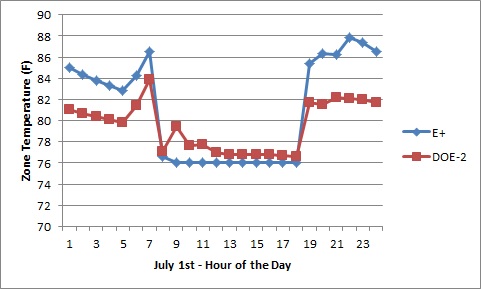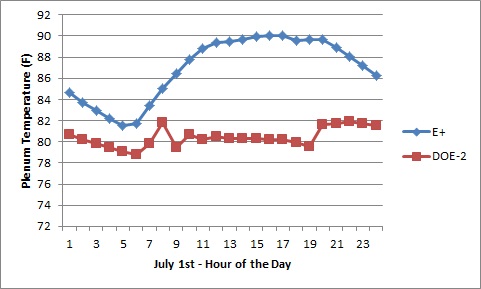I am modeling in EnergyPlus an existing DOE-2 model. The layout of building is pretty simple: 2 stories, 10 zones (8 perimeters and two cores). There is an unconditioned plenum above each zone. Here is the problem: I am noticing big discrepancies in zone temperatures in the summer between the two models, especially in the unconditioned plenum above each zone.
I've been trying to model everything identically :
- The thermal performance of the opaque assembly is similar in both cases,
- The thermal performance of the windows is similar (generated using WINDOW),
- For the simulation, I am using a DOE-2 BIN weather file that I converted to EPW,
- Efficiency and capacity of the HVAC equipment is the same,
- The performance curves used in the DOE-2 model have been converted,
- The internal gains and schedules are identical, etc ...
I am doing this exercise to learn more about EnergyPlus (I'm coming from DOE-2) but I cannot pinpoint what could be the issue here. I am probably missing something here that I may or may not know about EnergyPlus. Any input would be really appreciated!
Here is an example of what I am noticing. This example is for the perimeter zone facing East on the top floor and the plenum zone above it:


We can see that for the EnergyPlus model the HVAC system meets the loads during the day and at night, when it is off, the zone temperature goes up by almost 10 deg. F. This seems to be due to the fact that the temperature in the plenum is really high during the day, way higher than in the DOE-2 model.





